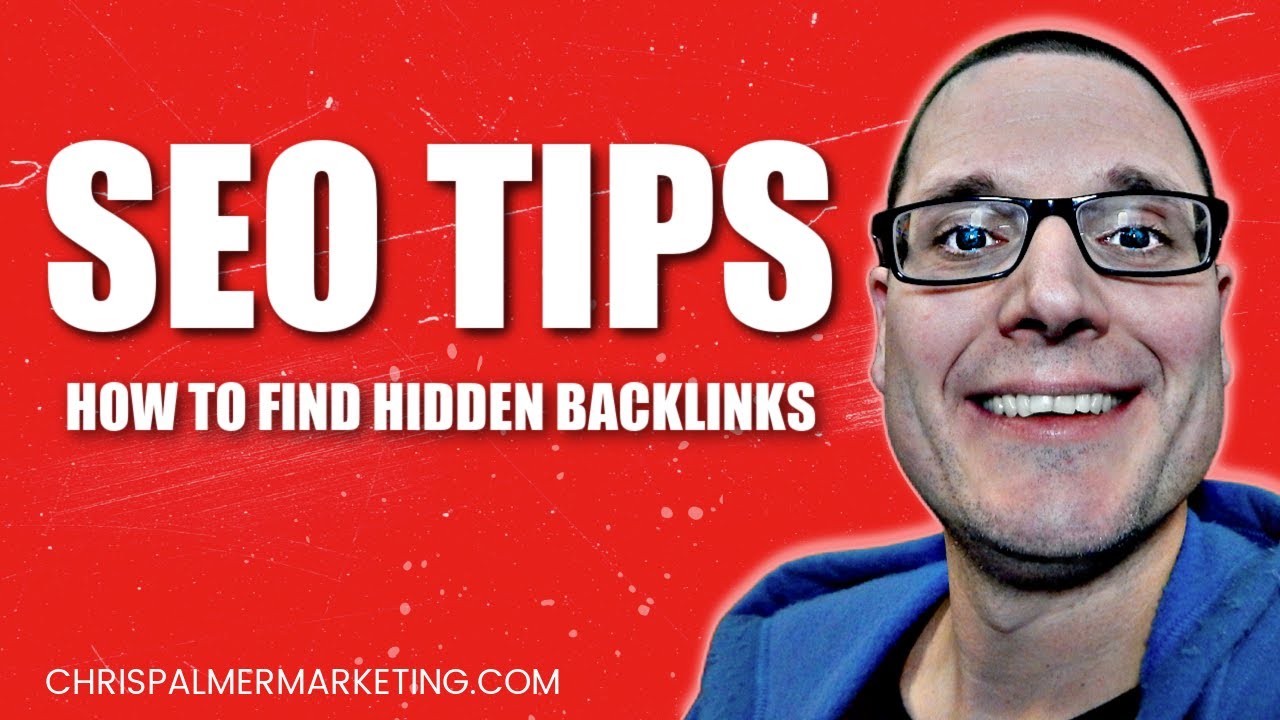
SEO for Beginners – Rank #1 In Google in 2022
Hey, are you an SEO beginner? Well, perfect! Because in this blog, I'm going to show you exactly how to rank on the first page of Google step-by-step. And read until the end, because I'm going to prove that 99.9% of people do this one SEO action completely backward. So if you're excited about this free SEO training, then drop a comment below with "let's do this", and let's dive right in.
So the first question I need to tackle is, "What is SEO?". SEO is an acronym for search engine optimization, which simply is the process of improving rankings in Google's organic search engine. And there's one reason why SEO is by far the best inbound marketing channel, and that's intent. When someone searches "SEMrush free trial", the intent is clear. They're towards the bottom of the sales funnel and they're getting closer to becoming a customer. More on that in a second, but intent is why SEO is the most popular inbound marketing channel. And the data proves this to be true.
For example, the keyword SEO gets double the amount of searches compared to other marketing channels like Facebook ads or even social media marketing. But that's not all. According to SEMrush rank, three out of the top five most popular websites in the world are search driven. YouTube is the most popular video search engine, Amazon is the most popular e-commerce search engine, and as you know, Google is by far the most popular traditional search engine. In fact, according to statistics (Statistica.com), Google owns 87% of the search market share as of 2021.
So now that you know the opportunity that exists with SEO, how do you actually do it? Well, let's dive into it. So the proven SEO process, I'm going to teach you, can be broken down into four pillars.
- Keywords
- Technical
- Content
- Backlinks.
Pillar one: Keywords
Let's start with pillar one, which are keywords. So keywords are the foundation of any successful SEO campaign, because they are what searchers used to find solutions and answers to their problems. And the goal is for your website to show up for keywords that your ideal customers are searching for.
So with that said, the first part of the keyword research process is to find keyword opportunities. Now how you go about doing this will depend on if your website has existing organic search traffic or not. So here's how to find out. Open SEMrush, enter your domain into the search bar, go to Organic Research, and look under Keywords. If you have existing keywords, then that's where you want to start, because it indicates that you're already doing something right.
In this case, what you'll want to do is identify what I call low-hanging fruits. And these are keywords ranking from positions number 2-15. So while in SEMrush, click on the Positions tab, and then the Positions' dropdown, and enter 2 and 15 into the custom range. And now you'll have access to all of your low-hanging fruit keywords. And these are the keywords that you need to prioritize because with some simple optimization and possibly some backlinks, you can push those rankings up and you'll see a big spike in organic search traffic.
In fact, according to a study conducted by Backlinko (backlinko.com), the number one spot gets approximately 31% of the total clicks for keywords, while the number five spot only gets 9% of those clicks. That means if you go from position number five to number one, it will produce huge traffic gains. And that's why you should focus all of your initial effort on these low-hanging fruits.
Now, you might be wondering, "How do you improve the rankings for these keywords?". While I'll be tackling that in a second. Now, what do you do if you have no organic keywords because you haven't done SEO or you have a brand new website. Well, here's what you need to do. Go to SEMrush, and go to the SEO section, and click on Keyword Gap, enter your domain, and then enter a few of your top organic search competitors' domains. If you're unsure who your top competitors are in organic search, then go to Keyword Research in Keyword Overview, and then enter a keyword related to your industry. In this example, I'll use SEO tools. Then scroll down to SERP Analysis and refresh the metrics, you can see which domains have the most search traffic.
While keeping this tab open, go to the Competitive Research section, open Keyword Gap in another tab, enter your domain first, and then copy and paste 1-4 competitors from the previous section into the keyword gap tool. Then click on the Position dropdown, click on Competitors, and select top 10. Then scroll down and look under All keyword details for. You can then sort these keywords based on a few different criteria. And the two you should be most interested in are missing and untapped, which both mean that one or both of your competitors are ranking for these keywords, but your website is not.
So now that you know how to find keyword opportunities in both scenarios, let me tell you the truth. Anyone can find keywords, but the real magic happens when you know how to filter through these keywords and select which ones are actually worth targeting. And in the next blog in this training series I'm going to dive deep into the second and third parts of keyword research. However, here are two things to consider when trying to select keywords.
Big question 1: "What is the intent?"
You should always prioritize keywords with transactional intent there towards the bottom of the funnel. And the best way to understand this is to know the five main categories of intent which are, informational, investigative, comparison, transactional, and navigational. And every strong SEO campaign will target keywords at each stage of the funnel.
So let's say you're building a keyword strategy for SEMrush. So at the top of the funnel, SEMrush would want to target keywords with informational intent, like "learn SEO" or "how to build backlinks". These keywords are broad and will drive the most traffic. The next phase of the search journey is to target keywords with investigative intent, like "SEO tools" or "best SEO tools". Now notice that this is much more relevant to what SEMrush offers.
So now at this point, the searcher is likely brand aware, which means they know about the big players in the SEO tool market like SEMrush. And that means they'll likely begin searching keywords with comparison intent, like "SEMrush vs Moz".
And as you can tell, the searcher is getting very close to making a decision and they're weighing their options. And now we've arrived at keywords with transactional intent, which in this case would be "SEMrush free trial". And the conversion rate for a keyword like this will be sky high. And the final type of intent is navigational, which is just "SEMrush" or "SEMrush login". And you won't need to spend too much time on these, because the brand should automatically rank.
So with that said, you should always start at the bottom of a sales funnel and work your way up.
Big question 2: "Can you actually compete for this keyword?"
Now the good news is that you can use SEMrush as Keyword Difficulty Tool to quickly filter through all of your keyword opportunities. So just enter your target domain or a competitor's domain into the search bar and go to Organic Research. Then click on Positions and go to the KD filter. Start with very easy and work your way up. These are the keywords you want to attack first because they won't require as many resources to rank.
So just to review, prioritize keywords with high transactional intent and low competition first. Now there are many more steps that go into keyword qualification and prioritization, but I'll share those in great detail in a future blog.
Pillar two: Technical
Now let's move on to the second pillar, which is technical. So you may have found some awesome keywords, but your site won't rank without optimizing for technical performance. Think of technical as the foundation of a house. It alone likely won't help you achieve first page rankings, but it's a requirement to get there. And I'll be diving deep into SEO audits in a later blog in the series. However, let's cover some quick wins right now. So first, go into SEMrush and look under ON PAGE & TECH SEO, and click on Site Audit. Click Add new project and enter your domain and the Project name.
Now before you change the site audit settings, open up Google in another tab, enter site:yourdomain.com. In this example, I'll use SEMrush.com. They have roughly 55,000 pages indexed. So I'll select 100,000 from the Limit of checked pages' dropdown. You can keep all of the other settings the same and click Start Site Audit.
Now once the audit is complete, you might be a little overwhelmed because SEMrush provides an enormous amount of data and different opportunities. Now in a perfect world, you could pursue fixing everything, and in long term you probably should, however, you need to prioritize because some opportunities will have a far bigger impact on performance than others. And at a high level, you need to optimize three core categories to achieve optimal technical SEO performance.
First, you need to make sure your website is crawlable and indexable. And there are many factors that impact crawlability and indexability, but some of the biggest include your website architecture (more on this in a second), your page experience, your robots.txt file and tags like "noindex" which could prevent Google from crawling pages on your website.
Now while in the SEMrush Audit Section, click on Issues, look for the Category dropdown and then select Crawlability.
SEMrush will then show you all the possible issues that could negatively affect crawlability. Then repeat this same exact process except change the category to Indexability. Once again, you can see exactly what could hurt your indexation. Tackle these items ASAP, because if Google can't crawl your pages, then they won't be indexed. And if they're not indexed, it's impossible to rank.
Second, you need to optimize for user experience (or UX for short). One of the most important UX factors is page loading speed. In fact, Google recently stated that Core Web Vitals is a ranking factor. So you need to do everything in your power to improve loading speed and page experience. So while on the Overview tab on the audit, you'll see the new Core Web Vitals score from SEMrush. Click View details, and you'll see the exact pages you need to improve. And the cool part about optimizing your site for Core Web Vitals is that most changes will have positive effects on a site wide basis, meaning you won't need to go page by page optimizing for Core Web Vitals for most of your pages.
And now the third technical pillar you need to optimize for is your site architecture, or in other words, internal linking. Now there are a few core tenants of internal linking. First, your pages shouldn't be more than three clicks deep into the architecture. Otherwise, it could potentially hurt crawlability and indexability. So go to the Crawled Pages tab in the SEMrush audit, click on More filters, select Crawl Depth from the dropdown and then select 4+ clicks from the second dropdown. And now you'll know what pages you need to push further up into the architecture.
The second part of optimizing your site architecture is to identify pages with poor internal link coverage. And the fastest way to find these pages is use SEMrush as internal link rank in the audit. So first, while still in the Crawl Pages tab, click on the dropdown and select Internal Linkrank. This is a proprietary score mechanism created by SEMrush, which gauges how much authority and link equity a particular page has. So if a page has many internal links from pages with many backlinks, the ILR score will be high. And a low score is an indication of poor internal link coverage. So on the second dropdown, you can select less than 10, and then you can see some pages that need more internal link love. So that is just a preview of how to optimize for technical SEO. Once again, I'll be going deeper into this in a future blog.
Pillar three: Content
So let's move on to pillar number three, which is content. So you've identified solid keywords and your technical performance is now on point, now you need to optimize your content. So I follow a simple process when trying to optimize a page. And here it is!
Is there keyword cannibalization?
So keyword cannibalization is when you have two or more pages targeting the same exact keyword phrase. And it's detrimental to your SEO performance, because it forces Google to decide which page is best for that keyword. And you don't want Google making those decisions. It's our job to direct Google.
In fact, John Mueller, the search Advocate at Google said this about keyword cannibalization:
"We just rank the content as we get it. And if you have a bunch of pages with roughly the same content, it's going to compete with each other, kinda like a bunch of kids wanting to be first in line, and ultimately someone else slips in ahead of them. Personally, I prefer fewer, stronger pages over lots of weaker ones – don't water your site's value down."
So the quickest way to identify keyword cannibalization is to use SEMrush as position tracking tool. Go to Keyword Research and click on Position Tracking. Then click on New position tracking to start a new project. Enter your target keywords and once the scan is complete, open up the project and then click on the Cannibalization tab. This will show you instances of keyword cannibalization for the keywords you've specifically entered.
Does the page need to be upgraded?
Your SEO driven pages should be different and better than what exists. Plain and simple!
Is the page optimized well?
At the most basic level, your primary keyword should be in your URL, title, H1 tag, first sentence and last sentence. But to take things up another notch, I recommend using SEMrush as On Page SEO Checker. Go to the ON PAGE & TECH SEO section, click on the On Page SEO Checker and start a new project. Click on import keywords and pages, and then select your preferred option. In this example, I'll use manually. Enter your target URL and the exact keyword phrase you want to rank for, and then click collect ideas. SEMrush will then show you how to optimize the target page from a strategy, content, semantic, technical, UX, and even the link building perspective. So make sure you benchmark your performance today and then execute on these recommendations.
Does the page have enough internal link coverage?
Go back to the audit and see if your target page is getting enough internal link coverage.
Does the page need more topical authority?
And the final check point is number five. If you find that the page doesn't have much internal link coverage, then it likely doesn't have much topical authority either. In other words, you need to create more keyword driven content to support that primary asset.
Pillar four: Backlinks
And now moving on to the last and fourth pillar of the SEO process which are backlinks. So I've been doing SEO consistently since 2011. And one thing has stayed the same - Backlinks are still the number one ranking factor. And this isn't just based on my experience alone. According to a ranking factor study conducted by SEMrush, they found that the more backlinks a domain has, the higher its position on the SERP. Now the key to remember that not all backlinks are created equal. In fact, some backlinks can wreck your rankings and get you penalized. Now before you attempt to acquire new backlinks, you first need to audit your existing backlink profile.
Open up SEMrush, go to the Link Building section, and click on Backlink Audit tool, create a project, and then run the audit. SEMrush will then give you an overall toxicity score. And if you have a high percentage of toxic domains, there are a couple ways to handle it.
- First, work to acquire higher quality backlinks to offset the low quality backlinks.
- And then second, if the backlinks are really nasty, then you can attempt to get them removed through outreach.
- And if outreach fails, then disavowing with Google should be the final option. Now keep in mind that disavowing backlinks can have a negative impact on your SEO performance, because you may decrease overall website authority. So that's why you need to be actively working to acquire new backlinks.
So like other parts in this SEO process, I'll be diving deep into effective backlink acquisition in a dedicated blog in this free training series. But for now, you should aim to acquire backlinks on websites that have the following three characteristics.
- It's relevant to your website. So if you own a coffee shop, you should try to get backlinks from coffee websites, food bloggers, etc.
- It's a real website with real organic traffic. So think about it. If a website has organic search traffic, and Google probably trusts it, and the opposite is true as well. If website has no organic search traffic, then you should probably be a little concerned.
- It's authoritative and their backlinks are high quality. So aim to get backlinks on websites with strong high quality backlink profiles.
Now there are many more qualifying factors, but for now those three will work. So the cool part is that you can run any backlink opportunities through SEMrush and quickly see at a glance if it has organic search traffic, if it has authority, and if the backlink profile is high quality.
Alright, so you made it all the way to the end and we covered a ton of ground. So at this point, you know the four pillars of proper SEO. In the next blog in this SEO training series, I'm going to dive deep into keyword research. In fact, you'll learn advanced keyword research techniques that 99.9% of your competitors are not using. I guarantee that! So if you got any value from this blog, make sure to come back regularly.
This is a transcripted version of the YouTube video, courtesy of SEMrush


